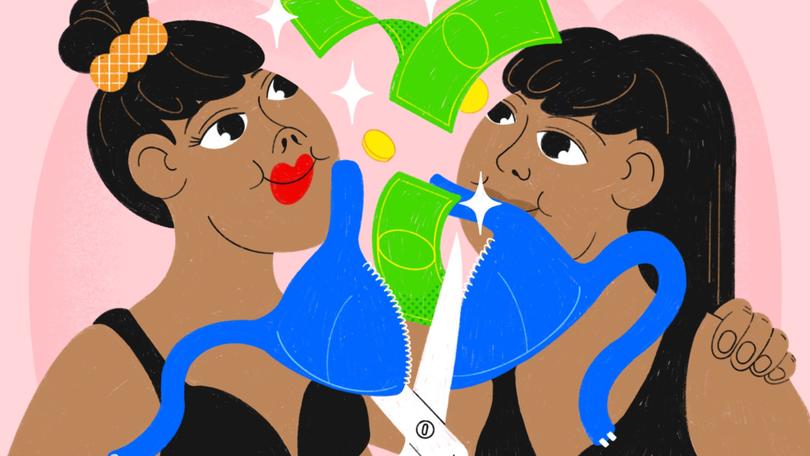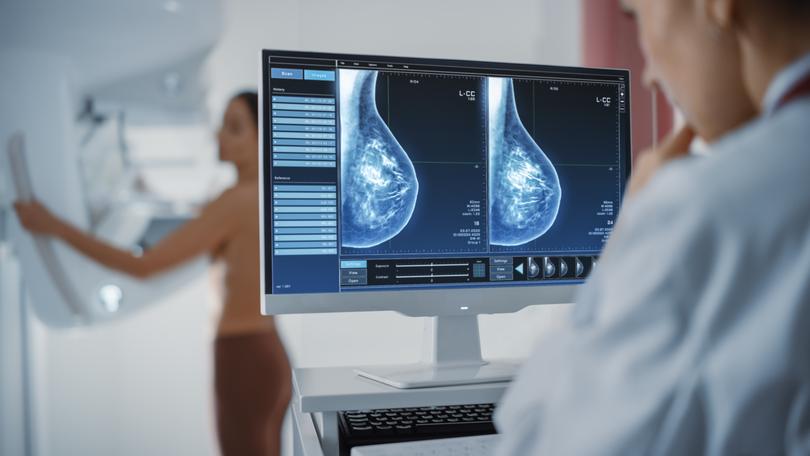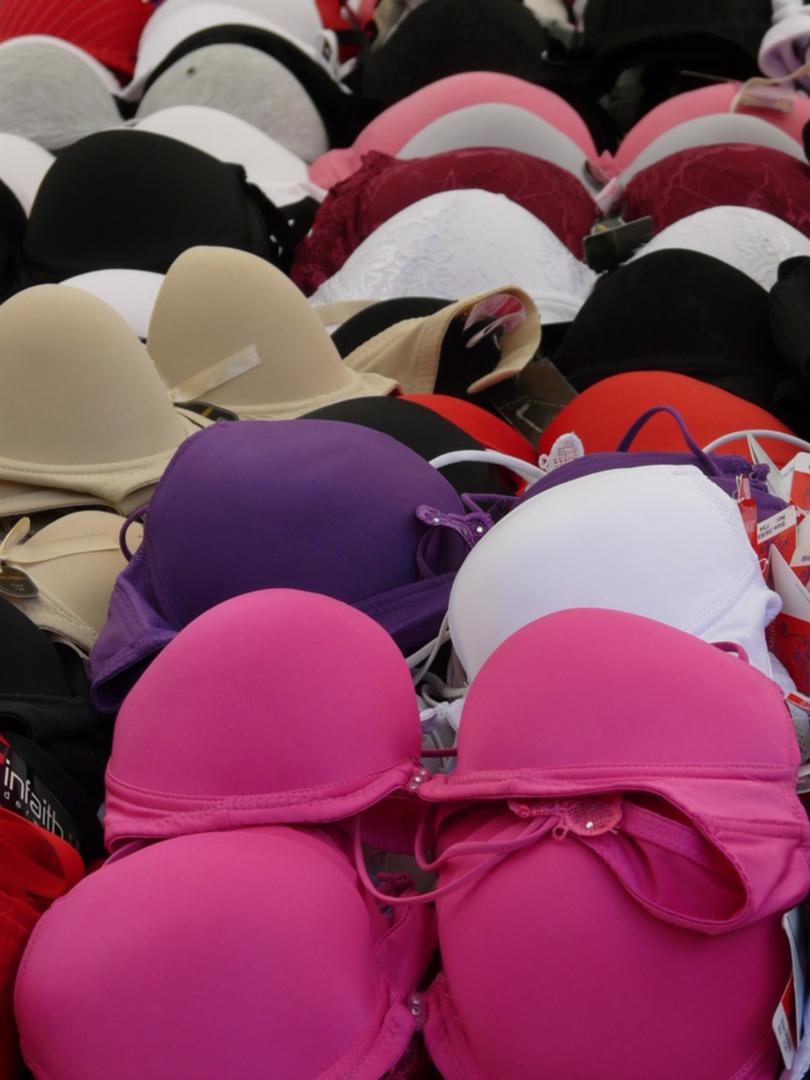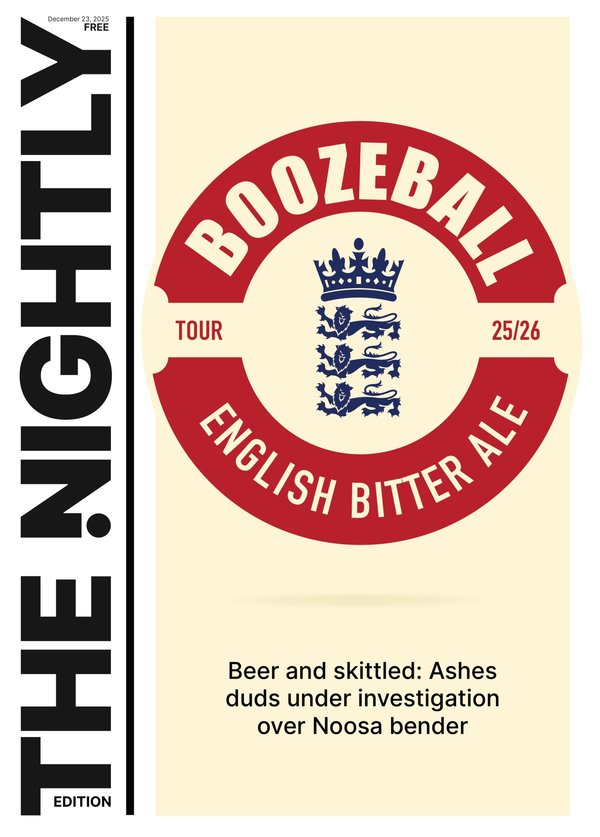GILL HODGES: Good bras are vital, and here’s why the Government should be cutting tax on our ‘boulder holders’

As a therapeutic radiographer, planning and delivering radiotherapy treatment, I see women’s breasts all the time — and one thing I know from the moment I look at a patient is if they’re wearing a poorly fitting bra.
A bra should keep you in place without moving around.
If a woman’s breasts are moving up and down a lot, then it’s clear that their bra is not supportive.
Sign up to The Nightly's newsletters.
Get the first look at the digital newspaper, curated daily stories and breaking headlines delivered to your inbox.
By continuing you agree to our Terms and Privacy Policy.And if bras leave indentations on the shoulders, the bra probably isn’t the correct bandwidth (that’s the measurement around the chest underneath the breasts, e.g. size 34 or 36), as too much strain is being put on the shoulders.
Back fat that overhangs between the straps also indicates that the bandwidth is too small.
This is something I see all the time — which is not surprising, given it’s estimated that around 80 per cent of women don’t wear the right bra.
But this isn’t just a matter of comfort or helping your clothes to hang correctly.
Women don’t realise that a poorly fitting bra can also have implications for their health — and even for NHS waiting lists.
That is why over in the UK the Society of Radiographers has launched a campaign calling for women’s bras to be made exempt from tax.
Many women will experience discomfort or breast pain as a result of breast movement.
This is thought to be linked to stretching of the supporting structures, including the skin and the cooper’s ligaments (the connective tissue that shapes and supports the breasts).
In addition, lack of support, especially for women with large breasts — cup size D and above — can lead to neck and back pain.
Because the weight of the breasts pulls you forward, it affects your posture, and that puts strain on the shoulders, neck and upper back.
When a bra is too small, if it’s underwired the wire can actually dig into the bottom of the breast tissue, which can also cause pain.
Additionally, an underwire that pokes into your bust or underarms may irritate the skin, causing soreness, chafing, or even permanent marks or grooves.

It can also lead to an infection or intertrigo, a nasty rash under the breast.
This inflammatory condition is triggered by a combination of friction and heat, and/or moisture being trapped near the skin where there’s little air circulation.
This may need treatment with an antifungal or antibiotics.
Similarly, if breasts are squeezed into the wrong cup size, it can lead to pain.
Bras can also cause pain and bruising if the band is digging in, and in more severe cases, lymphatic congestion.
The lymphatic system is a network of channels that carry fluid (or lymph) around the body to remove toxins and fight infections as part of our immune system, but if it is restricted it can lead to painful swelling.
Many of these problems may be attributed by the wearer to a medical problem.
Yet we know that in 50 per cent of cases where women have reported breast pain, it turns out to be due to a lack of breast support.
Indeed, it could have meant unnecessary referrals to breast clinics.
The problem women face is that high-quality, supportive bras are expensive and not affordable for everyone who needs them.
A bra offering proper support, especially for larger breasts, can cost more than $100 each, which is out of reach for some people.
In the UK, making bras exempt from the VAT tax would reduce the cost by 20 per cent.

If we can eliminate the pain and injuries by ensuring everyone can afford the right bra for them, it would result in fewer GP appointments and reduced sickness absences in the workplace — and waiting lists for back scans and investigations into back pain would go down.
With a significant shortage of radiographers (those who operate scanning machines to help diagnose injuries and diseases) in the UK, if fewer people need scans due to the effects of ill-fitting bras, it frees up scanners for others who need them for conditions such as osteoarthritis or a slipped disc.
What’s more, something as simple as removing the tax on bras and more women wearing supportive bras means they would be more likely to exercise.
We know if you’re in discomfort when walking or moving around, it can lead to a more sedentary lifestyle, which again is bad for overall health.
So how do you find the right bra for you?
Before buying, it’s best to get measured in a shop: don’t just assume your size will be the same as other brands you’ve worn before.
By getting measured first, you can check your choice of bra fits correctly and offers the right support.
The bra band, which is responsible for supporting the weight of your breasts, should form a straight line, and you should be able to run one or two fingers under it once it is fastened.
The cup should fully contain the breast without it spilling out at the sides or in the middle, and shouldn’t gape at the top of the cup (this indicates it is too big).
It’s also essential to get measured at least once every three years: breast size can change frequently, especially after weight loss or gain and breastfeeding – and in those cases, it’s best to check your size more regularly.
A lot of women will go for cheaper options when it comes to buying bras, not realising that poor support could lead to problems.
In Australia and the UK, women have campaigned successfully to get the GST and VAT on sanitary products scrapped.
Now it’s time that the Government removed the tax on bras.
It’s better for women — and for our medical system.
Gill Hodges is the past president of the UK Society of Radiographers
